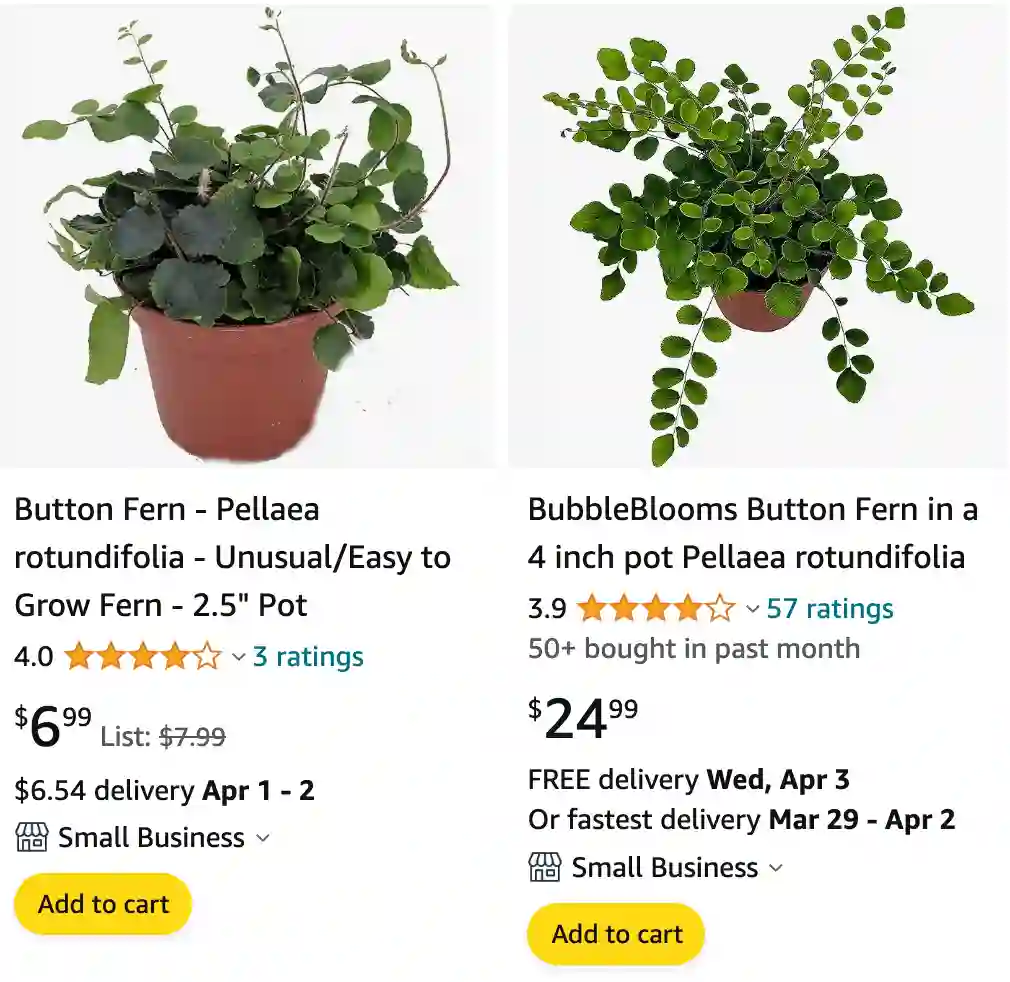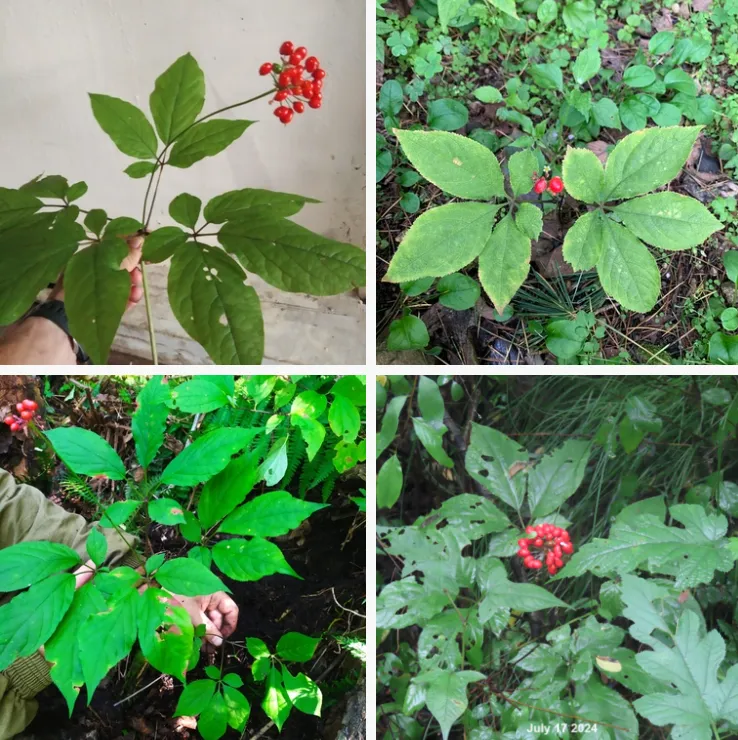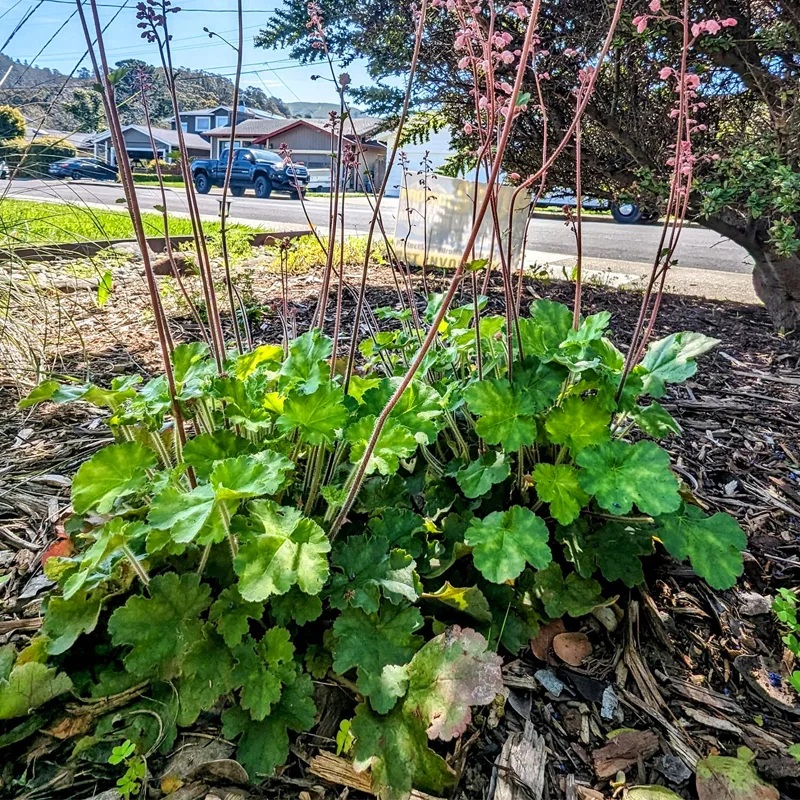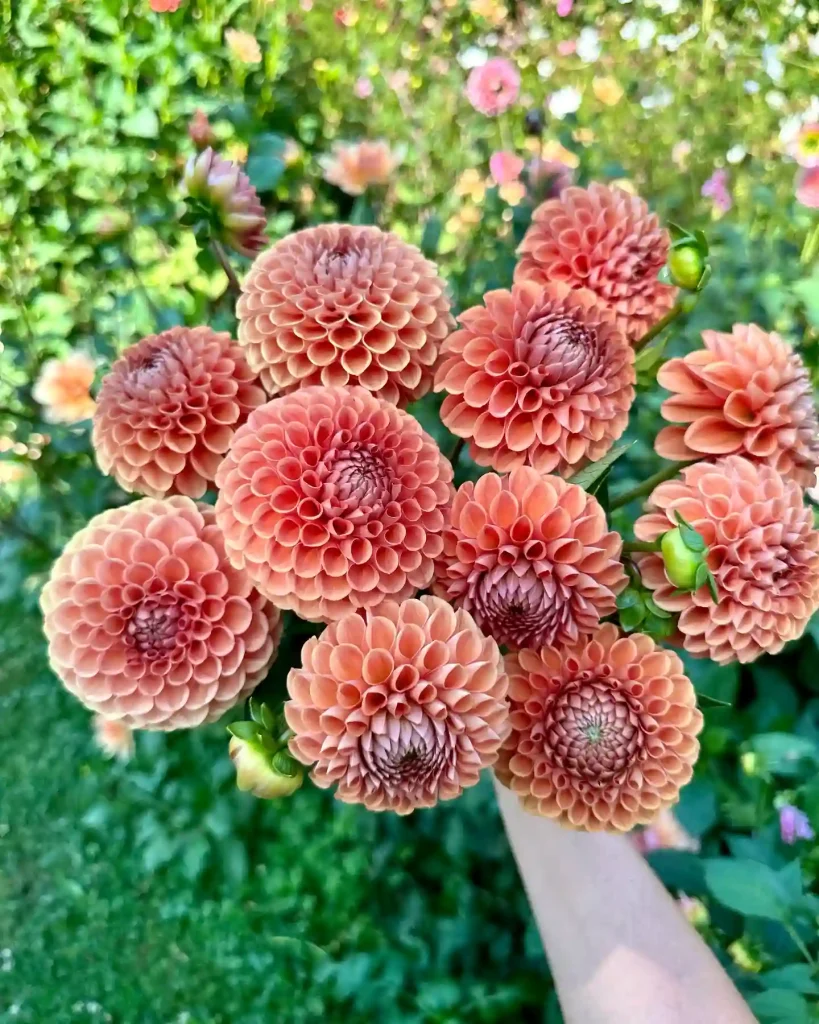
What is Pellaea Rotundifolia?
Hi, I’m Ferb Vu, and I’m here to introduce you to the charming Pellaea Rotundifolia, also known as the Button Fern. This little wonder is a verdant delight for plant enthusiasts of all levels. But before you rush out and snag one, let’s delve into some frequently asked questions to ensure this fern thrives in your care.
How to care for Pellaea Rotundifolia?
Light: Sun Seeker or Shade Dweller?
The Button Fern prefers dappled, indirect light. Think morning sun or a spot near a north-facing window. Direct sunlight can scorch its delicate fronds, so avoid harsh afternoon rays. While it tolerates lower light conditions, ensure it receives some natural light for healthy growth.
Compared to Staghorn Fern: Staghorn Ferns (Platycerium) are bolder, thriving in brighter, indirect light. They can even handle some filtered sunlight.
Watering: Finding the Happy Medium
Button Ferns appreciate consistently moist soil, but not soggy. Water deeply when the top inch of soil feels dry to the touch. Allow excess water to drain freely to prevent root rot. During winter, reduce watering as the plant goes dormant.
Compared to Maidenhair Fern: Maidenhair Ferns (Adiantum) are fussier about water. They require consistently moist soil and high humidity, making them a bit more challenging for beginners.
Temperature and Humidity: A Warm and Fuzzy Embrace
These ferns favor warm temperatures, ideally between 65°F and 80°F. They dislike sudden drops or drafts. Moderate humidity (40-50%) is ideal. Grouping plants together or using a pebble tray with water can help raise humidity levels.
Compared to Bird’s Nest Fern: Bird’s Nest Ferns are more adaptable to temperature fluctuations but appreciate similar humidity levels as Button Ferns.
Soil: The Foundation of Success
A well-draining, airy potting mix is crucial. A mixture of peat moss, perlite, and orchid bark provides good drainage and aeration. Avoid using garden soil, which can be too dense and retain excess moisture.
Compared to Snake Plant: Snake Plants (Sansevieria) are incredibly tolerant and thrive in various soil conditions, even well-draining cactus mix.
Fertilizing: A Light Touch
Button Ferns are not heavy feeders. A balanced, diluted liquid fertilizer applied monthly during the growing season (spring and summer) is sufficient. Avoid over-fertilizing, which can damage the plant.
Compared to Monstera: Monsteras (Monstera deliciosa) benefit from more frequent fertilization during the growing season, typically every two to four weeks with a diluted liquid fertilizer.
Repotting: Giving Your Fern Room to Grow
Repot your Button Fern every 1-2 years when it outgrows its current pot. Signs include roots circling the pot or the plant appearing pot-bound. Choose a pot only slightly larger than the previous one to ensure proper drainage.
Compared to Spider Plant: Spider Plants (Chlorophytum comosum) are prolific growers and may need repotting more frequently, especially if they produce many spiderettes (baby plants).
Common Problems and Solutions
Brown leaves: This can be caused by underwatering, overwatering, or too much direct sunlight. Adjust your watering routine and check light conditions.
Yellowing leaves: Similar to brown leaves, underwatering, overwatering, or lack of light can be culprits. Address these factors accordingly.
Pests: Watch for mealybugs, scale, or spider mites. Isolate the plant and treat with insecticidal soap or neem oil solution.
Button Fern vs. Other Ferns: Making the Right Choice
While the Button Fern is a charmer, here’s a quick comparison to help you decide:
- Maidenhair Fern: More demanding in terms of humidity.
- Staghorn Fern: Bold and prefers brighter, indirect light.
- Bird’s Nest Fern: More tolerant of temperature fluctuations.
- Spider Plant: Faster-growing and may require more frequent repotting.
The Button Fern’s compact size, delicate fronds, and tolerance for moderate light and humidity make it a versatile choice for plant beginners and seasoned enthusiasts alike. With proper care, this little fern will reward you with lush greenery for years to come. So, are you ready to button up your plant collection with a Pellaea Rotundifolia?
If i die, water my plants!



